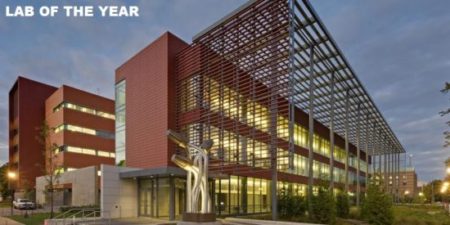
Rail, Light Rail and Subway Interference
Operation of rail, light rail, and subway systems produce transient magnetic fields that perturb the Geo-magnetic, and Quasi-DC magnetic fields and has become increasingly more frequent in urban settings such as academic, medical, and research campuses.
There are two components to the DC magnetic field impact from these transportation systems:
- Fast transient magnetic fields are produced by the flow of electric currents in the cables and rails of the DC traction system, (e.g. currents that power the light rail vehicles. Currents flow from traction power supply substations (TPSS) to the trains returning on the rails).
- Geo-magnetic field perturbations are focused by the ferromagnetic (steel) mass of the light rail vehicles, causing localized magnetic field shifts as trains pass
Both of these components combine to produce changes in the ambient magnetic field environment with characteristic time-scales typically ranging from a fraction of a second to tens of seconds. The magnitudes of these magnetic field changes are generally strongest near the alignment and decrease moving away from the tracks. Such magnetic field changes can interfere with the operation of sensitive instruments and measurement systems used in research in the physical, biological and health sciences.
These issues can become quite contentious because the public utility managing the light rail service routes the rail line to maximize transportation priorities. The EMI potential is often not even known before extensive planning and even some construction has begun. For example, a university is worried about the operation of their science research buildings and the local transportation utility often doesn’t recognize potential adverse impact or the mitigation costs. These situations require negotiation and experience. FMS has this experience from both sides of the table and can provide clients with examples of how other institutions dealt with the problem.
RFI: Trains, especially commuter-type trains present their own set of RF issues. They have their own RF footprint, which can make light rail around university campuses or research facilities problematic, and trains are increasingly being retro-fitted with WiFi and cellular repeaters.
FMS has extensive experience with all aspects of electromagnetic interference from rail systems, whether it is the interference caused to sensitive instruments in a medical or research laboratory, interference caused by the rail system’s signal or communication system or interference with an audio recording studio. In addition to technical expertise and on-the-ground experience, FMS has experience working alongside all of the various interested parties.




Transportation Projects

FMS as the EMF/EMI Consultant designed and installed the passive and active mitigation systems for this newly established interdisciplinary organization under the Office of Research of the University of California Irvine (UCI) to house state of the art electron-microscope labs (4 imaging cells). The project required analysis of interference potential of all internal and external emission sources, which included vehicle and facility elevators (DC), broadband electrical system (AC) sources, etc.

FMS was engaged as the project’s EMI Consultant by the project architect (Wilson Architects) to conduct an electromagnetic field (EMF) analysis in an existing laboratory (shell space) located in the basement level of the Harvard CNS facility.

Seattle Children’s Research Institute is currently in the construction phase of ”Building Cure”, a 540,000 square foot research building, which will be dedicated to developing therapies for children with diseases such as Cancer, Type 1 Diabetes and Sickle Cell Anemia.

FMS was engaged to conduct a thorough assessment of the building’s design for EMI interference threat concerns to sensitive research equipment. A document review and extensive 3-Dimension computer simulation studies were conducted to evaluate EMF emissions from the building’s electrical distribution, mechanical and other systems.

Over its 20 years, FMS has successfully completed hundreds of EMI projects which included a diverse range of consulting and mitigation services.
Take a look at a list of the markets we serve »

